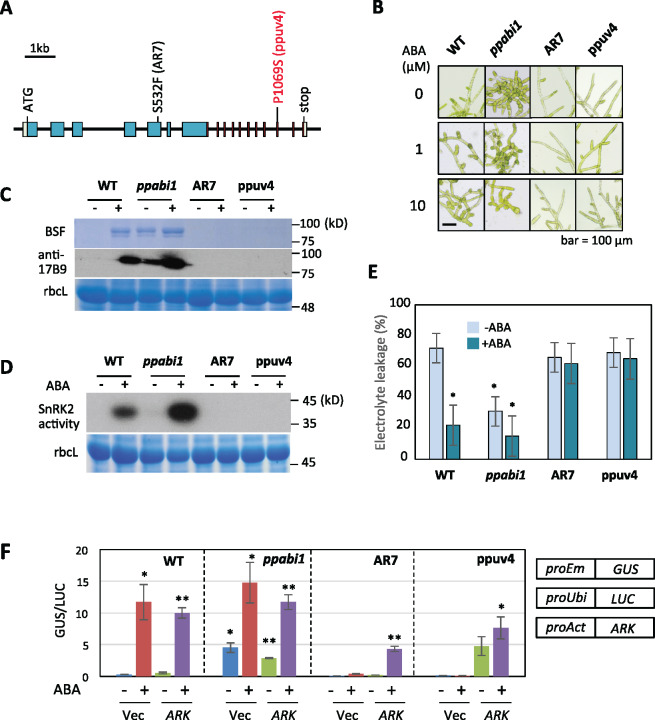Figure 6.
ABA response of ppabi1 ark lines of P. patens. (A) Positions of mutations found in the ABA-insensitive ppuv4 line isolated by ultraviolet mutagenesis of ppabi1. (B) Effects of ABA on growth of WT, ppabi1, AR7, and ppuv4. (C) ABA-induced accumulation of boiling-soluble LEA-like proteins in WT, ppabi1, AR7, and ppuv4. Total soluble proteins of these lines were boiled for 1 min and centrifuged, and the boiling-soluble fraction (BSF) in the supernatant was analyzed by SDS-PAGE. The proteins were either stained with Coomassie Brilliant Blue or used for immunoblot analysis using an antibody against the LEA-like 17B9 protein. Staining of the large subunit of ribulose bisphosphate carboxylase (rbcL) of the total soluble proteins is shown as a control. (D) SnRK2 activity in WT and the mutant lines analyzed by in-gel kinase assays using histone IIIS as a substrate. (E) Freezing tolerance tests of WT and mutant lines. Protonemata were treated with or without 10-µM ABA for 1 d and frozen to −4°C. Electrolyte leakage (%) was measured after thawing to determine freezing injury. Error bars indicate standard error of the mean. *P < 0.05 in the t test (n = 3) compared with ABA-non-treated WT. (F) Gene expression with or without 10-µM ABA treatment in WT and the mutant lines. Transient gene expression analysis was carried out using the construct of ARK fused to the rice actin promoter (proAct) or that without ARK (Vec). Error bars indicate standard error of the mean. *P < 0.05, **P < 0.01 in the t test (n = 4) compared with the values of WT (Vec, -ABA).

